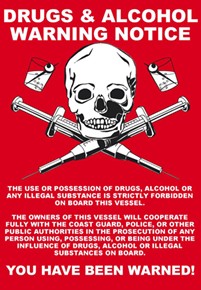 We don’t have too many hobby horses here at Microkhan, but one of them is a steadfast belief that many long-accepted practices are far less effective than advertised. This is typically because our species is easily seduced by logical facades, and thus pays too little attention to actual evidence. You can understand, then, why the medical establishment spent centuries swearing by bloodletting—it makes intuitive sense that “bad blood” would equate with ill health. It wasn’t until we sat down and really analyzed patient outcomes that we realized the practice was doing more harm than good.
We don’t have too many hobby horses here at Microkhan, but one of them is a steadfast belief that many long-accepted practices are far less effective than advertised. This is typically because our species is easily seduced by logical facades, and thus pays too little attention to actual evidence. You can understand, then, why the medical establishment spent centuries swearing by bloodletting—it makes intuitive sense that “bad blood” would equate with ill health. It wasn’t until we sat down and really analyzed patient outcomes that we realized the practice was doing more harm than good.
A less extreme example from modern times is alcohol warning labels. Whenever we get midway through our third beer of the evening, we often wonder whether these ubiquitous labels have ever been proven to deter a single imbiber. There’s a famous early-to-mid ’90s study that found such labels “do not appear to increase or decrease alcohol use.” But that study relied on self-reporting from teenagers, which doesn’t exactly make for the best data. What’s needed is a way to construct a controlled experiment, in which drinkers whose bottles feature the labels are compared to drinkers who aren’t warned via small-type text. Yet that hasn’t been possible here in the U.S., since the warning labels broke nationally instead of on a state-by-state basis.
Fortunately for us, the Australians have the chance to settle this whole warning-label business once and for all. The country is considering labels in the wake of reports that 47 percent of its murders are tied to drink. And this presents a great opportunity to build the kind of experiment we here at Microkhan would love to see:
Unlike many public health interventions, alcohol warning labels are a good candidate for a policy trial. It’s hard to randomise exposure to quarantine laws or food safety standards, but relatively easy to control exposure to alcohol health warnings.
For example, we could take two cities of comparable size, say Sydney and Melbourne or Brisbane and Perth, introduce alcohol warning labels in one of them and not the other. After a decent interval – 12 months at a minimum – we could measure whether there has been a change in the level or nature of alcohol-related harms in each city. This would involve selecting a few measurable indicators, for example, alcohol-related admissions to hospital emergency departments and motor vehicle accidents involving alcohol, and measuring them both before and after the health warnings are introduced. The impact on specific at-risk groups, such as young people, should also be measured to determine whether they respond differently to health warnings, compared with the general population.
We have little doubt that such a study would conclude that warning labels have close to zero impact. But it would nice to have the labels’ futility proven by science, rather than remain just a cynical hunch.
(Image via Marine Safety Equipment Services and Sales Ltd.)


Citrus is Your Friend // Aug 19, 2009 at 10:51 am
[…] we touched upon medicine’s tendency to stick with certain treatments even when there’s a lack of […]